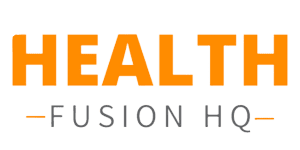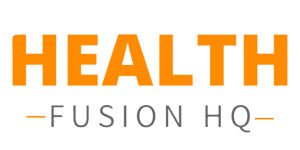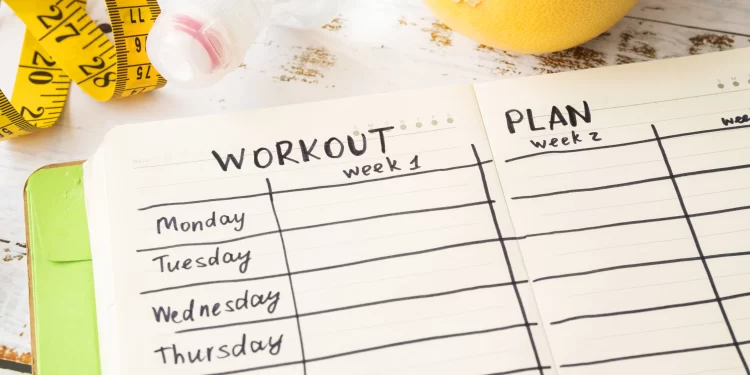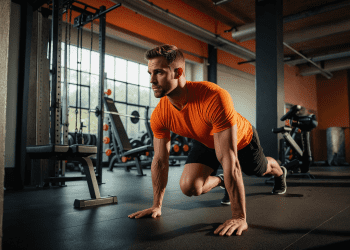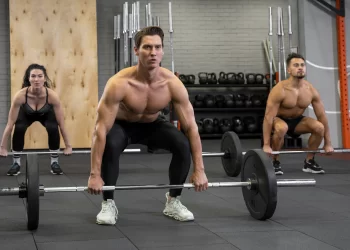Beginner Workout Plan – A Guide to Starting
Beginning a workout routine can feel overwhelming, particularly for those new to fitness. However, with the right guidance and understanding, embarking on a beginner workout plan can become a manageable and rewarding experience.
This guide aims to provide an overview of the essential aspects to consider when starting a workout routine.
| Key Takeaways |
| Identify your end goal: Whether it’s weight loss, muscle building, or flexibility, knowing your target will help you plan your workout routine. |
| Determine your skill level: Start at the right intensity and gradually build up to avoid overexertion and injuries. |
| Create a realistic routine: Focus on consistency rather than intensity in the beginning. Choose exercises that are easy to do and schedule them daily. |
| Incorporate a mix of activities: Try combining cardio and strength training to maximize benefits. |
| Set achievable goals: Break down larger objectives into smaller, attainable targets. |
| Seek professional guidance if needed: Consider working with a fitness trainer for proper form and technique. |
| Emphasize cardiovascular exercises: Include low-impact activities like cycling, swimming, walking, and occasional high-intensity exercises like running. |
| Incorporate flexibility and mobility training: Engage in exercises that improve joint mobility, decrease muscle stiffness, and enhance range of motion. |
| Prioritize rest and recovery: Allow your body enough time to recover after workouts, get adequate sleep, and consider foam rolling for post-workout recovery. |
| Track progress and increase workload: Set goals, track your workouts and progress, and gradually increase the intensity and volume of your workouts over time. |
| Listen to your body: Pay attention to your body’s signals of fatigue or discomfort and adjust your routine accordingly. |
A 3-Step Guide to Starting a Beginner Workout Plan:
- Identify Your End Goal – Are you aiming to lose weight, build muscle or enhance flexibility? Know what your target is and plan around it.
- Determine Your Skill Level – Start at the right intensity. Understand where you stand and build up slowly and steadily.
- Create a Realistic Routine – In the beginning, focus on consistency rather than intensity. Choose exercises that are easy to do and schedule them every day until it becomes part of your lifestyle.
To gain maximum benefits while starting, maintain proper form and ample recovery time between exercises.
Some Suggestions for Starting Workout Plans:
- Try mixing activities such as cardio and strength training
- Set achievable goals in small increments
- Seek professional guidance if required
Following these suggestions will keep you committed to your beginner workout routine for prolonged periods with maximum results. Get your heart racing with these cardio exercises, because no one wants a heart that’s as lazy as a couch potato.

Cardiovascular Exercises to Incorporate
To help you incorporate cardiovascular exercises into your beginner workout plan, this section offers an introduction to cardiovascular workouts, as well as step-by-step guidance for running and tips for using cycling as a form of cardio.
Introduction to Cardiovascular Workouts
Cardiovascular workouts are an essential part of maintaining a healthy lifestyle. Robust exercise, which raises the heart rate and revs up blood circulation, is necessary for strengthening the heart and lungs to prevent cardiovascular disease.
Various low-impact exercises such as cycling, swimming, or walking with occasional short bursts of high-intensity exercises like running can help in achieving cardiovascular fitness. These workouts boost endurance and stamina by increasing the body’s ability to produce energy from oxygen.
It is crucial to set attainable goals while doing cardiovascular workouts, always warm up before starting the exercise to boost muscle performance, and then cool down once done. Moreover, Cross-training or combining multiple exercises boosts overall mental health and focus while reducing injuries from repetitive motions.
Moreover, engaging in physical activity improves one’s immunity functioning and reduces the chances of chronic diseases like hypertension and diabetes that lead to cardiovascular malfunctions.
Fitness trainers worldwide relate stories of clients who rejuvenated their lives with cardio workouts after enduring chronic illnesses caused by sedentary lifestyles. Adopting cardiovascular exercises as part of a routine lifestyle evolution might be lifesaving.
Get ready to hit the pavement and leave your worries in the dust with this step-by-step guide for running.
Step-by-Step Guide for Running
Starting a Running Routine: A Professional Step-by-Step Guide
Running is an excellent choice for cardiovascular exercise that helps in building endurance and burning calories. Here’s a professional guide to help you begin your running journey:
- Start with a Warm-Up: Begin with simple stretches, walk, or jog to prepare your body for running.
- Choose Suitable Gear: Wear comfortable shoes and clothes while running, which assists in preventing injury and increases performance.
- Start Slowly and Increase Gradually: Initially, start slowly with walking and jogging for short distances, gradually increasing the intensity level with time.
- Focus on Proper Technique: Keep your posture straight, engage the core muscles, land gently on the midfoot instead of heels, and maintain a steady pace.
- Cool Down: Finish off your workout with some easy stretches to calm down your body.
Additionally, incorporating interval training by switching between short sprints and jogging can further boost your cardiovascular fitness without putting too much strain on the body.
When starting a running routine, it’s essential to listen to your body’s limitations to avoid any injuries or setbacks before reaching your goal.
A true story of an Olympic athlete illustrates the importance of following a proper step-by-step guide when starting running routines. During his early days as an athlete, he believed that pushing himself harder would give him more significant results in less time. However, overexertion led him to multiple injuries that eventually hampered his Olympic dreams. By retrospectively analyzing his training mistakes, he altered his approach by sticking to a steady regime under suitable guidance which allowed him to regain peak physical condition and achieve his goals efficiently.
Pedal your way to better cardiovascular health and a new excuse for spandex in your wardrobe with these cycling cardio tips.

Tips for Cycling as Cardio
Cycling as a Cardiovascular Exercise
Cycling is an effective way of incorporating cardiovascular exercises into our daily routine. Here’s how you can make the most of it:
- Pick your terrain: Choose the terrain that best suits your fitness level and experience to avoid exhaustion.
- Set goals: Determine the distance and time you want to achieve during each cycling session to maintain consistency and track progress.
- Equipment matters: Make sure you have well-maintained bicycles and suitable safety gear, like helmets and reflective clothing, before starting your cycling regimen.
Furthermore, it’s important to remain hydrated during cycling sessions which aids in performance enhancement and prevent dehydration. Always carry water bottles or electrolyte drinks to avoid muscle cramps or nausea.
Finally, I know a friend who was struggling with weight loss until they started cycling regularly while also making small dietary changes. Within six months, they lost over 20 pounds! Get ready to lift, bro! Building strength with resistance training is about to turn you into a shredded machine.
Building Strength with Resistance Training
To build strength with resistance training in your beginner workout plan, you need to have a good overview of resistance training. You can start with bodyweight exercises to build your strength, and then move on to using resistance bands effectively. This will help you to get a full-body workout and build strength over time.
Overview of Resistance Training
Resistance training is an effective exercise technique that utilizes resistance to build strength and muscle mass. This type of workout involves the use of weights, resistance bands, and bodyweight exercises. Resistance training has numerous benefits for individuals looking to improve their overall health and fitness levels. It can help increase bone density, reduce the risk of injury, and improve balance and coordination. Additionally, this training method can aid in weight loss by increasing metabolism and burning more calories even after the workout is complete.
One benefit of resistance training not previously mentioned is its ability to improve mental health by reducing symptoms of depression and anxiety. Resistance training releases endorphins which provide a feeling of well-being and act as natural painkillers.
Pro Tip: To maximize the benefits of resistance training, it is important to incorporate a variety of exercises targeting different muscle groups and using different types of resistance equipment. Also, make sure to allow for proper rest periods between workouts to avoid overtraining and injury.
Why pay for a gym membership when you can use your own body weight? It’s like renting a car when you’ve got two perfectly good legs.
Bodyweight Exercises for Beginners Workout Plan
Bodyweight training exercises are a great way to increase strength and muscle tone without the need for equipment or gym memberships. If you’re new to bodyweight exercises, several low-impact exercises can help get you started.
- Planks: This exercise strengthens your core and improves stability. Begin in a push-up position with your body straight, then lower yourself onto your forearms and hold the position for 30 seconds while keeping your hips level.
- Push-ups: Push-ups work your chest, arms, and shoulders. To do push-ups, start in a plank position with your hands directly under your shoulders, then lower yourself until your chest nearly touches the floor before pushing back up.
- Bodyweight squats: This exercise works out major muscle groups like the glutes, quads, and hamstrings. Stand with feet shoulder-width apart; bend at the knees until thighs are parallel to the ground; return to standing position.
For proper form and technique when performing these exercises, we recommend working with a professional trainer or ensuring that you have the correct information from online resources.
Incorporating these bodyweight exercises into your workout routine can help you build functional strength as well as improve balance and flexibility. So why not add them to your daily routines?
Don’t miss out on the many benefits of adding resistance training to your fitness regimen! Start by incorporating bodyweight training into your workouts today!
Resistance bands are the duct tape of the fitness world – versatile, affordable, and can be used to fix just about anything.

How to Use Resistance Bands Effectively
Using Resistance Bands for Optimal Strength Training
Resistance bands are one of the most efficient tools in strength training. Here’s how to make the most of them:
- Choose the proper resistance level according to your fitness level and exercise goal.
- Ensure proper form and alignment throughout each exercise, keeping your core tight, and movement controlled.
- Vary resistance by adjusting distance or tension in different exercises for a more challenging workout.
- Use resistance bands for full-body workouts to target multiple muscle groups at once.
- Make resistance band training part of your regular workout routine.
In addition, make sure to warm up properly and stretch after each session to prevent injury and aid recovery.
To achieve optimal results, incorporate resistance band exercises into your regimen along with other types of strength training such as weightlifting or bodyweight exercises.
Start using resistance bands today and experience the benefits of a stronger, leaner physique! Flexibility is the key to a happy body, just like forgiveness is the key to a happy marriage – both require hard work and a lot of stretching.
Incorporating Flexibility and Mobility Training
To incorporate flexibility and mobility training with the beginner workout plan, you need to explore the benefits of this type of training while also introducing the best static stretches for beginners and yoga. These sub-sections offer a great solution to enhance your overall fitness and to help you achieve your workout goals.
Benefits of Flexibility and Mobility Workouts
Flexibility and Mobility Workouts play a crucial role in enhancing physical well-being. These workouts help improve joint mobility, decrease muscle stiffness, enhance range of motion, and save us from future injuries. By allowing a wider range of motion, these workouts give you the ability to participate in other forms of exercise that may require more flexibility and mobility.
- Reduces Risk of Injury
- Improves Muscle Recovery
- Helps Improve Posture
- Enhances Athletic Performance
Moreover, these exercises enhance coordination as well as balance by improving body awareness and control. It is an essential aspect for those who tend to sit or stand for long periods and feel pain or stiffness in the body.
When practicing flexibility and mobility exercises, it is imperative to avoid pushing oneself too hard. This can cause injuries due to overstretching, which can be detrimental to one’s well-being.
Supposedly, Kobe Bryant utilized a routine incorporating yoga before games to ensure his body was limber and prepared to perform at his best possible level.
Stretching is like yoga, without the annoying chanting and pretending to be a tree.
Best Static Stretches for Beginners Workout Plan
For individuals embarking on flexibility and mobility training, it is important to start with the best static stretches for beginners. These stretches are designed to increase flexibility and range of motion safely and effectively.
Here are the 5 best static stretches for beginners:
- Hamstring stretch
- Quad stretch
- Chest stretch
- Shoulder stretch
- Butterfly stretch
To maximize the benefits of each stretch, hold them for at least 30 seconds and repeat them two to three times per session. It is recommended to perform these stretches after a warm-up or at the end of a workout to prevent injury.
Incorporating these static stretches into your fitness routine can improve overall flexibility, enhance performance and reduce muscle soreness. Once you have mastered these beginner-level exercises, you can explore more advanced stretching techniques aimed at targeting specific muscles.
Take advantage of the potential benefits of incorporating static stretching into your workout routine. Start today and see how increasing your flexibility can positively impact your physical and mental well-being.
Yoga: the perfect way to stretch out your muscles and calm your mind, unless you accidentally fart during downward dog.

Introduction to Yoga for Flexibility and Mobility
Yoga – the way to a more flexible and mobile body that can help to reduce stress and minimize the risk of injury. Engaging in yoga provides numerous benefits which promote good circulation, enhance flexibility, increase strength, and improve balance. Through a series of postures and breathing techniques, yoga improves mobility while releasing tension in our muscles. With consistency and proper guidance, yoga for flexibility and mobility can transform your mind, body, and soul by adding warmth to your practice routine.
Incorporating yoga into your lifestyle promotes an active lifestyle that not only nurtures your physical health but also aids in emotional well-being. The regular practice of yoga enhances flexibility to improve joint range of motion leading to reduced pain, stiffer joints are suppler. Additionally, practicing various asanas increases the range of motion both externally and internally helping to remove restrictions within every layer and encourage smooth movements throughout movement patterns.
Take small steps today towards incorporating yoga into your life now! Don’t be left behind in this profound holistic well-being revolution. Join millions who have benefited physically, emotionally, or even spiritually from incorporating yoga into their daily practices now!
Rest and recovery are like Batman and Robin – you can’t have one without the other, and together they save your body from injury and fatigue.
Importance of Rest and Recovery
To prioritize your progress with the ‘Beginner Workout Plan’, it is important to understand the significance of rest and recovery. With ‘How Rest and Recovery Affect Your Workouts’, ‘Tips for Adequate Sleep and Recovery’, and ‘Foam Rolling for Post-Workout Recovery’ as solutions, you can enhance your body’s ability to restore, repair, and rebuild after exerting physical effort.
How Rest and Recovery Affect Your Workouts
Your Body Needs Time to Recover After Workouts for Optimal Performance
When it comes to fitness, we often think that working out continuously will give us the best results. However, rest and recovery are equally crucial for achieving optimal performance during workouts. Without adequate rest, your body won’t have enough time to recover from previous workouts, leading to muscle fatigue, decreased strength, and increased risk of injury.
In addition to avoiding physical strain on your muscles and joints, rest also helps reduce stress levels. Mental fatigue can be just as debilitating as physical exhaustion and could even lead to burnout. Taking a few days off from your workout routine or incorporating low-impact exercises into your weekly plan can help with mental relaxation.
Furthermore, getting enough sleep is one of the key elements of proper rest and recovery. Sleep allows your body to repair damaged muscle tissue and restore hormone levels essential for muscle growth. Not getting enough proper sleep can result in weakened immune function, disturbed hormone balance, increased appetite, and decreased performance capabilities.
Historically, some of the most renowned athletes emphasized resting as part of their strategies for training. The legendary basketball player Michael Jordan once said that he gave his body plenty of time to recover because “you can practice shooting eight hours a day if you want but if your technique is wrong then all you become is very good at shooting the wrong way.” So, don’t overlook the importance of ample rest when trying to achieve peak physical fitness!
Sleep like a baby, wake up feeling refreshed, and repeat – unless you actually want to change a diaper.
Tips for Adequate Sleep and Recovery
Getting enough sleep and proper recovery are critical factors in achieving optimal health. Here are some helpful ways to ensure you get the restorative rest your body needs.
- Establish a consistent bedtime routine to signal to your brain that it’s time to wind down
- Avoid screen time before bed as the blue light can disrupt melatonin production
- Aim for 7-8 hours of uninterrupted sleep each night and create a comfortable sleeping environment
In addition to these tips, practicing relaxation techniques such as yoga or meditation can help calm your mind and prepare it for rest. It’s essential to prioritize rest and manage stress levels for overall well-being.
Did you know that not getting enough sleep over prolonged periods can increase the risk of chronic diseases such as diabetes and heart disease? Getting adequate rest plays an integral role in maintaining good health, so make sure it remains a priority in your daily routine.
A famous historical figure, Benjamin Franklin, once said, “Early to bed and early to rise makes a man healthy, wealthy, and wise.” His words hold even today as studies have shown that those with regular sleep schedules lead healthier and more productive lives.
Why pay for a massage when you can just lay on a foam roller and scream in agony?
Foam Rolling for Post-Workout Recovery
Foam rolling is a crucial element in muscle recovery after exercise. It serves to target tight muscle fibers commonly known as trigger points and loosen them up. This process improves circulation, flexibility, and range of motion while reducing inflammation and soreness.
A 4-Step Guide to Self-Massage for Accelerated Athletic Recovery
- Locate the area that needs attention.
- Place the foam roller underneath you and apply gentle pressure.
- Slowly roll back and forth focusing on the tension-rich spots.
- Spend at least 30 seconds working on each area.
It’s worth mentioning that this technique requires careful attention to technique since aggressive rolling can aggravate already inflamed areas.
Pro Tip: Foam rolling is most effective when done frequently rather than sporadically, meaning you should aim to incorporate it as part of your post-workout routine regularly.
Tracking progress and increasing workload, because nothing says self-care like constantly pushing yourself to your limits.
Tracking Progress and Increasing Workload
To track your progress and increase your workout intensity with our beginner workout plan, we present the section on tracking progress and increasing workload. The sub-sections include setting achievable goals for progress, emphasizing the importance of tracking your workouts and progress, and exploring ways to gradually increase load and intensity over time.
Setting Achievable Goals for Progress
To make progress tracking more effective, it is important to establish attainable targets as a first step. Defining clear and concise goals helps showcase accomplishments and provide direction toward the ultimate objective.
- Identify the areas that need improvement for better workload management
- Set realistic goals – frequently monitor and adjust them accordingly
- Breakdown larger objectives into smaller achievable targets
- Create a timeline with specific completion dates for each goal
- Track progress by using the right metrics and data analysis tools
- Celebrate milestones achieved on time, make strategic decisions, and follow up to optimize performance.
While setting the right objectives is essential, finding your motivation can aid you in achieving them. It could be a reward system or a promise to oneself of long-term benefits. Such incentives may inspire an individual to achieve their targets consistently. Did you know that successful people are 50% more likely to set explicit aims? (Harvard Business Study) Track your progress, because if you don’t, how will you know when to celebrate with a well-deserved pizza?
Importance of Tracking Workouts and Progress
Semantic NLP Variation of the heading ‘Importance of Tracking Workouts and Progress’: The Significance of Monitoring Fitness Routines and Development
Making progress is not an overnight process, especially in developing a fit and healthy lifestyle. To track progress and increase workload, monitoring fitness routines and development is essential. Here are five reasons why tracking fitness routines and progress is crucial:
- Helps evaluate the effectiveness of workouts
- Facilitates goal setting and motivates to achieve targets
- Assists in identifying weaknesses or setbacks for improvements
- Serve as a record to monitor long-term performance growth
- Helps plan and adjust training programs accordingly to prevent burnout or undertraining
Without effectively tracking workouts, it becomes impossible to ensure progress toward achieving fitness goals. It’s imperative to make use of various performance measurements methods such as heart rate monitoring, strength tests, or even body weight metrics. By keeping an eye on relevant data points like the number of reps/sets achieved or recovery time taken between sessions – patterns/trends can be identified toward stronger results.
Don’t miss out on the benefits that come with tracking workouts & making overall health goals accomplishment possible — start recording today!
Ready to turn up the heat on your workload? These ways to increase load and intensity will make your boss think you’re a machine.

Ways to Increase Load and Intensity Over Time
To sustain progress, it’s essential to increase workload and intensity over time. There are multiple ways you can do this without compromising safety and performance. Here are a few strategies to consider:
- Gradually increase the volume: Gradual progression helps your body adapt to increased stimulus. It also minimizes injury risks and improves recovery. Add small increments of reps, weight, or time to your routine every week, depending on your goals.
- Vary your exercises: Adding variety to your workouts can shock your system into new adaptations. It also reduces boredom and stimulates muscle growth from different angles. Incorporate new movements, equipment, or environments into your regimen regularly.
- Shorten rest intervals: Decreasing rest time between sets challenges your stamina and cardiovascular capacity. It also improves metabolic demand for fat loss and muscle endurance. Alternate between low- and high-intensity intervals or circuits.
It’s crucial to understand that not all progress is linear, nor does every method work for everyone consistently. Listen to your body’s signals of fatigue, discomfort, or plateaus and adjust accordingly.
To avoid stagnation in training or performance goals, keep a record of metrics such as strength, speed, range of motion, or endurance over time. Regularly evaluating these measurements helps identify trends in progress that may need adjustment.
Don’t let fear hold you back from challenging yourself toward new personal bests! Get out of your comfort zone by testing new limits with supervision from experts when necessary – the payoff in satisfaction is well worth it!
Keep track of your progress, unless you’re a detective trying to solve the case of missing productivity.
Conclusion
After following this beginner workout plan, one can expect to see a notable increase in their strength and endurance levels. The routine is designed in such a way that it targets multiple muscle groups for overall fitness and has gradual variations to avoid plateauing.
Incorporating compound exercises like squats, deadlifts, bench presses and pull-ups along with isolation exercises like bicep curls and tricep extensions helps gain both overall strength and aesthetics. Alongside regular cardio routines, adequate rest and recovery times are essential to avoid injuries.
It is also crucial to remember that diet plays an essential role in achieving fitness goals. Consuming healthy foods rich in protein, carbohydrates, and fats in the right ratios aids muscle growth while reducing excessive body fat.
Everyone’s fitness journey is unique, so listen to your body’s needs before beginning or modifying any new routine.
Frequently Asked Questions
Q: What is a beginner workout plan?
A: A beginner workout plan is a fitness program designed for individuals who are new to exercise or have not exercised regularly in a while. It typically includes basic exercises and a gradual increase in intensity to build endurance, strength, and overall fitness.
Q: What are some good beginner exercises to include in a workout plan?
A: Some good beginner exercises include walking, jogging, cycling, bodyweight exercises (such as squats and push-ups), and simple strength training exercises using light weights or resistance bands.
Q: How often should a beginner workout?
A: It is recommended that beginners engage in physical activity for at least 30 minutes a day, five days a week. However, workout frequency should be based on an individual’s fitness level and goals. Starting with 2-3 days a week and gradually increasing the frequency and intensity of exercise is a good approach for beginners.
Q: What should be included in a beginner workout plan?
A: A beginner workout plan should include a mix of cardiovascular exercises, strength training, and flexibility exercises. It should also be tailored to an individual’s fitness level, goals, and physical limitations.
Q: How long should a beginner workout for?
A: A beginner workout should last for at least 30 minutes, including a warm-up and cool-down. However, the duration of a workout can be gradually increased as an individual’s fitness level improves.
Q: Should beginners hire a personal trainer to develop a workout plan?
A: While it is not necessary to hire a personal trainer, working with a professional can help develop a safe and effective workout plan tailored to an individual’s goals and limitations. A personal trainer can also guide proper form and technique to prevent injury and maximize results.
